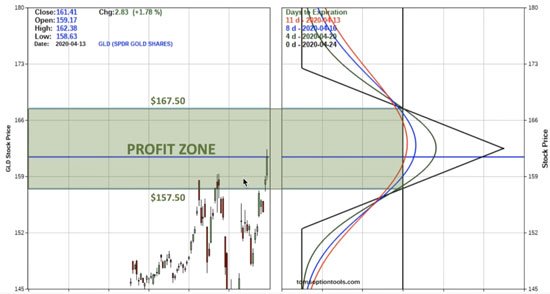Sandwiches, suits, couches, Bitcoin mining rigs - pretty much anything I can think of, there's nothing quite like getting something custom made, just the way I like it.
There's trucks, for instance. Take a look at my trophy-winning custom job... "Goliath."
Goliath came off the "shelf" as a Ford pickup... then we made some tweaks here and there.
 I'm really proud of it (as you can see). Goliath is beautiful and practical; we regularly pile in for family road trips, rolling in style in a ride that's got "my truck" written all over it.
I'm really proud of it (as you can see). Goliath is beautiful and practical; we regularly pile in for family road trips, rolling in style in a ride that's got "my truck" written all over it.
Putting together a good trade is the same way - custom made.
When you put on the special trade I'm going to tell you about in a second, you'll be making a move that's perfectly tailor-made to your unique risk tolerances and profit goals...
There's a Lot to Love About This Beautiful Butterfly
The butterfly is the least expensive, least risky options strategy there is. And the one I'm going to show you works best when you expect the stock to be trading in a range. You're capping your profits - but just as important, you're capping your risk, too. As rules-based traders, we'll take modest profits over big losses any day of the week.
Now, a butterfly is a kind of spread trade; you're "spreading" your options around, buying and/or selling more than four options with three different strikes - one at a lower strike, one at a higher strike, and two with a strike smack in the middle of the upper and lower - all on the same underlying stock.
You can put this together with any range-bound stock. You can shoot for a 14- or 21-day time frame and you can use calls or puts.
Like I said, custom-made.
If it sounds complicated, don't worry: I'm going to include some graphics as we go along with this example. It's worth mentioning that this isn't a trade I'm recommending - it's one we put on a few months ago for a 50% profit - but I'm just showing you how it's done.
In this example, using the SPDR Gold Shares ETF (NYSEArca: GLD), we bought two calls and sold two, all expiring on the same day, but at slightly different strikes.

Now, here's where it's tricky. There are three options, but two "legs" or "wings" to this trade. Selling one GLD April 24, 2020 $162.50 call and buying the GLD April 24, 2020 $152.50 call constitutes one bull call spread.

The other leg is a bear call spread, which would be selling the other of the two GLD April 24, 2020 $162.50 calls and buying the GLD April 24, 2020 $172.50 call.

Every part of the spread protects every other part of it. To get into a trade like this costs $5 per contract, or $500 total - that's your maximum risk. Your maximum possible profit is $500, or 100%.
Looking at the following risk graph will help it all come together for you.

If you look at the right-hand side of the chart, you can kind of see why this trade is called a "butterfly." The pointy, rightward-facing triangle is the "head" (some people think it looks like a witch's pointy hat) and the two "wings" are just behind that in the first and third quadrants. Everything to the right of the "breakeven" line would be profit; the risk is all in the "wings."
Your Profit Zone is the green shaded area in the GLD stock chart on the left side of the image. That means as long as GLD trades between $167.50 and $157.50, time will work in our favor to make us money.
Butterflies make money as time goes by. If the stock is trading exactly at the middle strike price at the expiration date, you get your maximum possible profit.
Now, that's not going to happen often in a butterfly (though it's not impossible), so knowing how and when to exit your butterfly is absolutely critical.
Fortunately, it's also simple.
If the trade's going my way, my rule of thumb is this: If my butterfly hits 50% of my maximum possible profit, or I'm within two days of expiration - it's time to go.
Of course, not every trade is going to work out: If it looks like a loser, I like to get out if the stock rises above or below the upper or lower strikes. Thanks to the structure of a correctly executed butterfly, the loss should be small; I'll be back to fight another day.
That said, it's possible - but extremely uncommon - for the underlying stock to gap up or down and blow way past your limit, in which case the loss will be greater, but of course it won't exceed the maximum.
And that's the basic butterfly. Keep your eyes peeled for more profitable options strategies I'll send your way.
And in the meantime, don't forget to check out my latest opportunity to make weekly profits...
You see, since June 8, this group of readers has had the chance to take home six sets of profits by trading weeklies - and they all took just three days or less. They're that fast.
And the best part? I send readers a new weekly option recommendation every single Monday.
To learn how you can receive my next one, just click here.
Follow Money Morning on Facebook and Twitter.
About the Author
Tom Gentile, options trading specialist for Money Map Press, is widely known as America's No. 1 Pattern Trader thanks to his nearly 30 years of experience spotting lucrative patterns in options trading. Tom has taught over 300,000 traders his option trading secrets in a variety of settings, including seminars and workshops. He's also a bestselling author of eight books and training courses.



